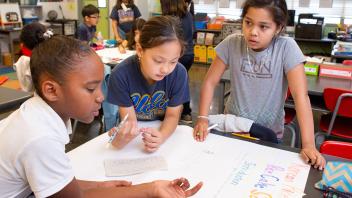Will we have an earthquake here? Will we have a tsunami here? I know I’m not the only parent or teacher to be asked those questions this week.
The crisis in Japan is so difficult to comprehend, especially for our young ones. Learning more about a situation can provide opportunities to talk through fears and concerns. Here are some resources that you might find useful to share with kids. Some are designed specifically for children, others are not, so be aware of ads or surrounding content that may not be appropriate for your audience.
CNN Student News from 3/14/11 provides a report on the earthquake and tsunami. The broadcast is in student-friendly language. The animations of the tsunami explain well the ocean energy Japan experienced.
Larry Ferlazzo’s Websites of the Day has a compilation of resources for learning about the earthquake and tsumani.
Time for Kids includes mini-lessons for Grades 3-4 and 5-6. The Grades 3-5 lesson includes an earthquake fact book that provides some (not much) information about earthquakes.
Scholastic News also has information on the disaster, including a slide show of pictures that show the damage caused by the earthquake and tsunami.
Satellite photos of before and after the quake and tsunami are featured in this New York Times interactive resource. By moving the slider, users are able to compare satellite images of the nuclear plant, Sendai, and the Iwaki area.
From the LA times, a timeline map that begins two days before the quake. The timeline shows a series of smaller quakes earlier in the week and the series of aftershocks since the 9.0 quake on Friday.
The International Center to Heal Our Children provides information on helping children cope with the feelings they may be having. I think it is designed primarily for children who have experienced an earthquake first hand, but the How To Help suggestions from page 2 seem useful for any situation.
Last, Dr. Hartstein gave advice on CBS for parents of kids of all ages on how to discuss the country’s devastation. Her advice? Supervise any coverage they may be watching and help them understand what they are seeing. And be prepared to provide accurate information, keep it simple, and provide lots of reassurance.
You might also want to look through the resources on our sister site, Colorín Colorado, Helping Students Cope with Global Disasters .
If you have found good resources, particularly interactive ones, please share them in the comments section. Thanks!

